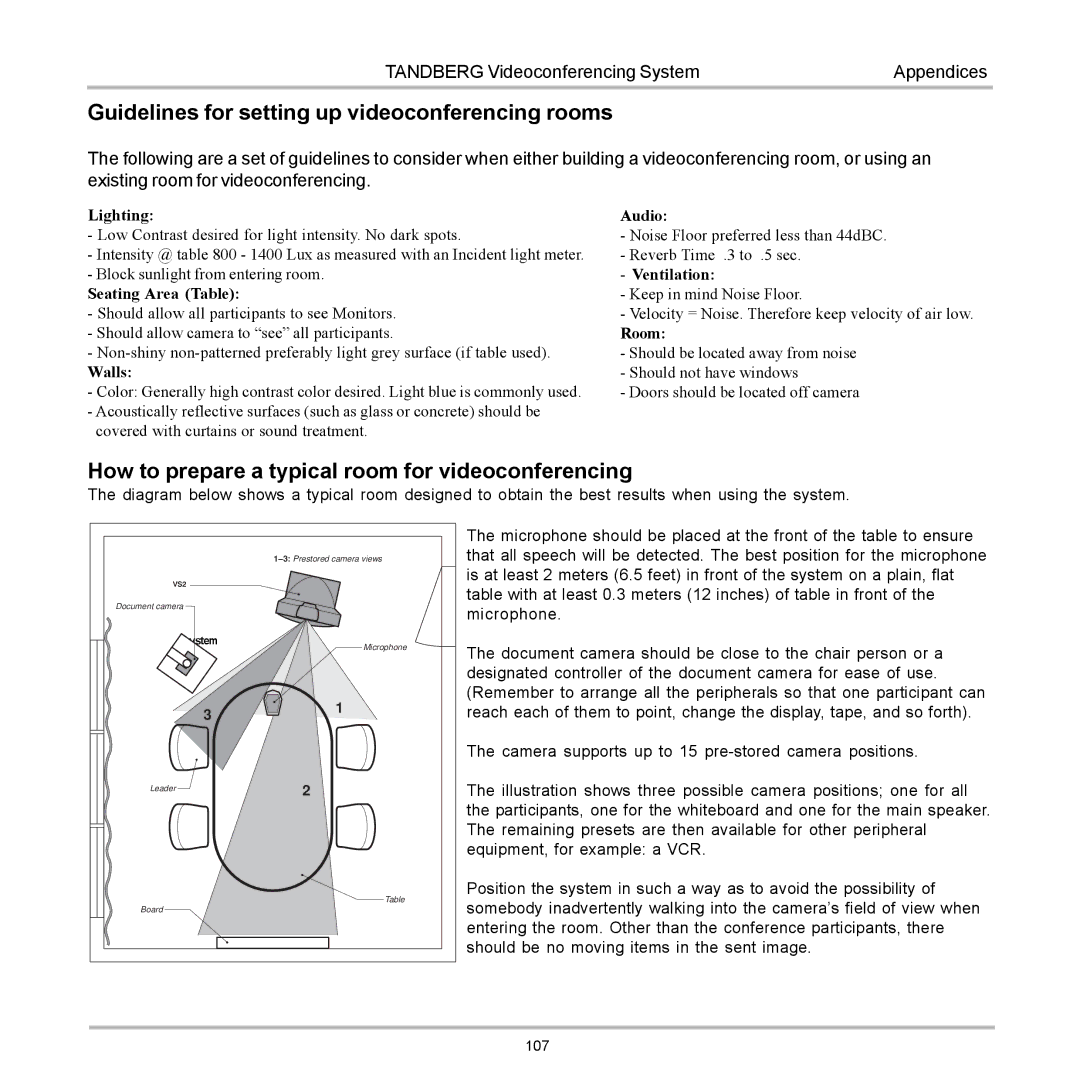
TANDBERG Videoconferencing System | Appendices |
Guidelines for setting up videoconferencing rooms
The following are a set of guidelines to consider when either building a videoconferencing room, or using an existing room for videoconferencing.
Lighting:
-Low Contrast desired for light intensity. No dark spots.
-Intensity @ table 800 - 1400 Lux as measured with an Incident light meter.
-Block sunlight from entering room.
Seating Area (Table):
-Should allow all participants to see Monitors.
-Should allow camera to “see” all participants.
-
-Color: Generally high contrast color desired. Light blue is commonly used.
-Acoustically reflective surfaces (such as glass or concrete) should be covered with curtains or sound treatment.
Audio:
-Noise Floor preferred less than 44dBC.
-Reverb Time .3 to .5 sec.
-Ventilation:
-Keep in mind Noise Floor.
-Velocity = Noise. Therefore keep velocity of air low. Room:
-Should be located away from noise
-Should not have windows
-Doors should be located off camera
How to prepare a typical room for videoconferencing
The diagram below shows a typical room designed to obtain the best results when using the system.
Document camera
Microphone
31
Leader | 2 |
|
Table
Board
The microphone should be placed at the front of the table to ensure that all speech will be detected. The best position for the microphone is at least 2 meters (6.5 feet) in front of the system on a plain, flat table with at least 0.3 meters (12 inches) of table in front of the microphone.
The document camera should be close to the chair person or a designated controller of the document camera for ease of use. (Remember to arrange all the peripherals so that one participant can reach each of them to point, change the display, tape, and so forth).
The camera supports up to 15
The illustration shows three possible camera positions; one for all the participants, one for the whiteboard and one for the main speaker. The remaining presets are then available for other peripheral equipment, for example: a VCR.
Position the system in such a way as to avoid the possibility of somebody inadvertently walking into the camera’s field of view when entering the room. Other than the conference participants, there should be no moving items in the sent image.
107
